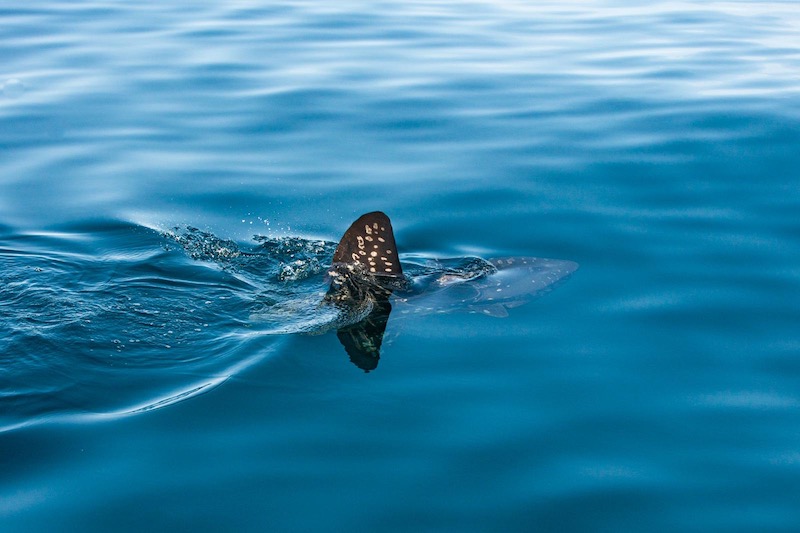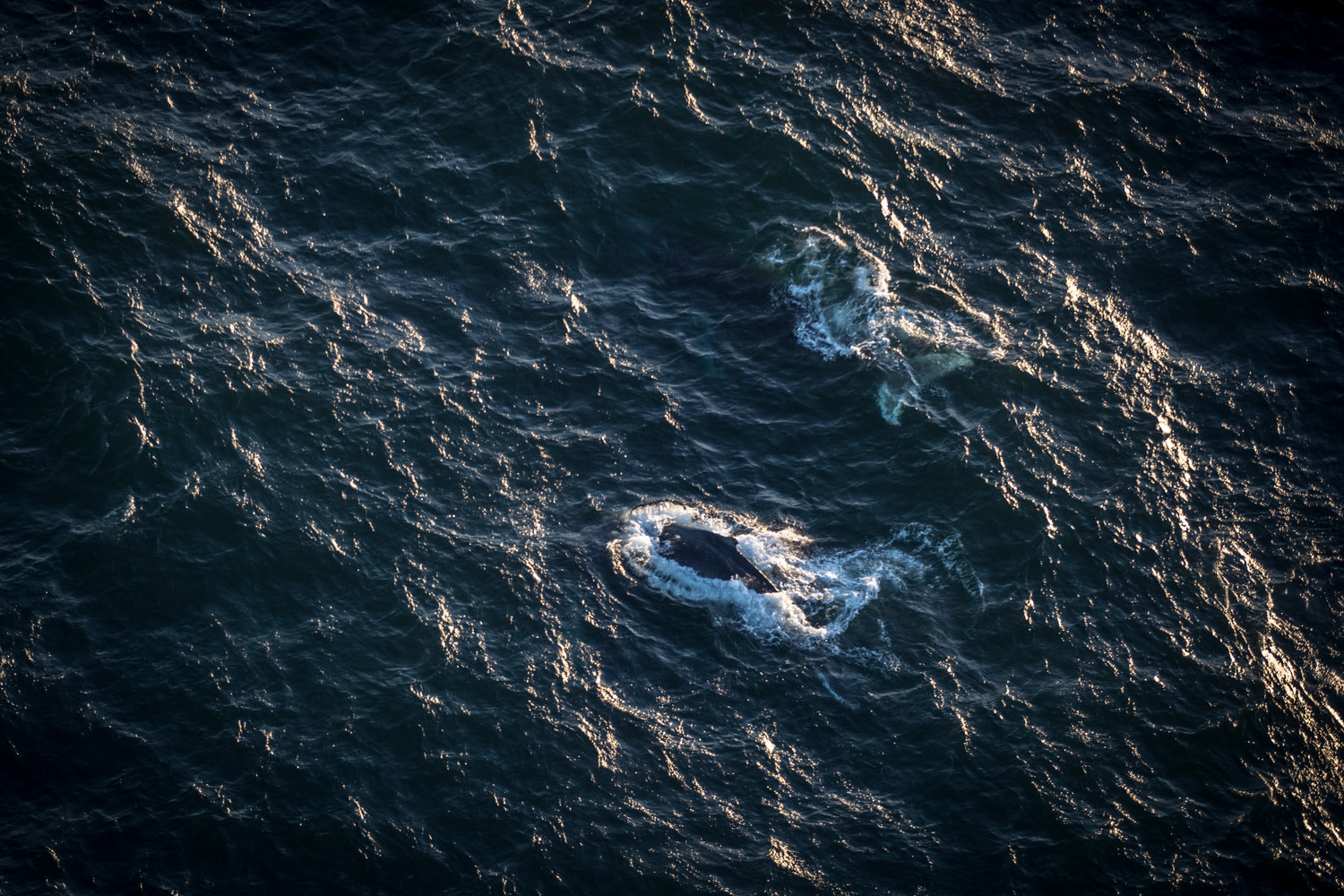Protecting marine mammals while enjoying our oceans
Known for being one of the most treacherous races in the world, the Vendée Globe tests the endurance and stamina of the best sailors on the planet.
However, despite years of preparation, a lifetime of training and millions spent on building the fastest, cutting edge, high-tech boats, the sailors remain at the mercy of Mother Nature in their oceanic circumnavigation.
The 2020-21 Vendée has seen a number of teams with serious damage to their boats having hit something in the water. These are often described by sailors and the media as ‘UFOs’. Not ‘unidentified flying objects’ but ‘unidentified floating objects’. These objects range from marine debris and containers fallen from ships to marine mammals.
Damian Foxall, our Sustainability Manager at 11th Hour Racing Team, thinks we should be moving away from this ‘fanciful’ term. “I don’t like the term UFO as it doesn’t fully share what is going on. It is disingenuous and misleading, suggesting to the public that we are randomly hitting unknown floating objects that are in our way.
“When racing, we certainly can hit marine debris – containers or logs floating in the water – which are typically hard objects. This causes local damage on the leading edge of the appendage where the strike is. However, many incidents are the result of collisions with marine life. We immediately think of whales, but can often include sharks, sunfish, and other species. If the animal is quite large, it can have a very significant impact, often causing serious damage to the animal, boat and crew. Typically though, there is very little local damage at the contact area. As sailors on board the boat, we can interpret quite quickly what type of strike we’ve had.
“The truth is, sailing boats and vessels do hit a lot of marine animals. However, data from the International Whaling Commission [IWC] Ships Strike Database shows that strikes from the sailing sector are, at best, only partially represented. The marine sector as a whole needs to find solutions to this problem, which is an issue for all vessels at sea – not just ocean racers.”
Colliding with anything when racing is worrying for any sailor, but what’s perhaps more worrying is the fact that a collision happened at all. Our oceans shouldn’t be full of marine debris, but they should be full of marine wildlife. It’s our role as sailors – stewards of the ocean – to treat this natural space and its biodiversity with respect, protecting it as best we can.
There are lots of ways we can do this – here are just a few…
On Board Tech
Technology has come a long way, and we are constantly reviewing what’s available to make sure we’re impacting our marine wildlife as little as possible, but there is no silver bullet. These are the current three most used on board technology solutions:
OSCAR Collision Avoidance:
Many IMOCAs and ocean racing trimarans have an OSCAR installed – an infrared thermal camera watch-keeping system that is designed for monitoring objects that break the surface and above. It’s a rectangular box placed on top of the mast that has two cameras – one to identify surface shapes, and the other to identify temperature contrasts via thermal imagery. If it detects an object at the surface on the boat’s route (within its maximum detection range of 500m), an alarm is triggered. Around half of the 2020-21 Vendée sailors set out with this system on their boats. However, as with any watch keeping system, its capability to warn of potential collisions depends on lots of things – it’s operating range, accuracy of observation, sea state and boat speed, to name just a few. At speeds of 20kts+, the time to collision can often be counted in seconds, leaving very little time to correctly assess the risk and react accordingly.
FarSounder:
For larger leisure craft, the FarSounder is often the tech of choice. It’s a forward-facing sonar and watch-keeping system, specifically designed to map the water column in front of the vessel. Using a frequency that is chosen to be of minimal impact to marine life, the system has the capability to detect marine mammals in the path of the boat. A group of experts in offshore sailing, including representatives from 11th Hour Racing Team, are currently working with FarSounder to understand how best to integrate their product into the performance sailing sector.

Keeping marine mammals safe when sailing
Marine mammals play a crucial role in our ocean’s biodiversity, and their feeding and movement directly affects ocean health on a global scale.
For us at 11th Hour Racing Team, we’ve been taking particular care with our transatlantic crossings, as the North Atlantic is prime whale territory.
Here’s how we can all help protect marine wildlife while we sail:
Before you leave:
- Research and implement effective solutions to improve on board watch keeping and marine animal avoidance systems
- Apply due diligence when passage planning, contacting the relevant organisations before you leave to identify sensitive habitats and species at risk
- Involve relevant stakeholders such as race and event organisers and marine traffic coordinators to make route and departure date adjustments if necessary
- Designate a crew member as marine animal observer (MAO), prepare before you go: density maps, ID cards of likely species, citizen science tracker
- Prepare an emergency protocol in the event of an incident.
When at sea:
- On the water respect restricted zones and marine traffic guidelines which may include specific instructions such as: No Go Zones, Go Slow, and minimum approach distances
- Pay attention to marine mammal live tracking data when available, and to any dynamic management areas and directives
- Proactively compile Citizen Science data afloat: take images, record latitude and longitude, date and time and ID marine animals when possible
- Share the story of the ocean’s beauty: the more people we can get excited about marine mammals there is more chance of protecting them
Accidents do happen
We all know that sometimes accidents happen, no matter how prepared you are.
Just like in the Vendée Globe, collisions with marine mammals are occasionally unavoidable, but there are ways to deal with incidents that make the situation a whole lot better, this starts with acknowledging the incident.
If you do experience or see a collision, entanglement or other marine mammal incident, here’s what you should do:
- Observe and note the facts – latitude and longitude; date and time; type of incident; visual ID
- There is an obligation to promptly report hazards at sea to vessels in the area and the relevant coastguard authority
- There is a responsibility to report marine mammal collisions. The IWC (International Whaling Commission) maintain a marine mammal strike database, this is a confidential process, and can be done via a 3rd party onshore
A final few words from Anne DiMonti, Director of Bristol Rhode Island’s Audubon Society
“One of the myths around marine mammals is that the whale will get out of the way – the whale sees you and knows that you are there – but this simply isn’t true. Even if it does become aware, a number of species are slow moving, incapable of manoeuvring away from a fast moving vessel.
“Always remember that you are sharing the habitat of these marine mammals, which is why route planning is so important. Never be afraid to report anything – we can use all this data to help educate other seafarers. Education is our greatest tool in safeguarding our marine wildlife.
“Let’s do citizen science together: as sailors, you are out at sea far more than us scientists so please be our eyes and ears. Let’s all come together and protect our marine mammals.”




